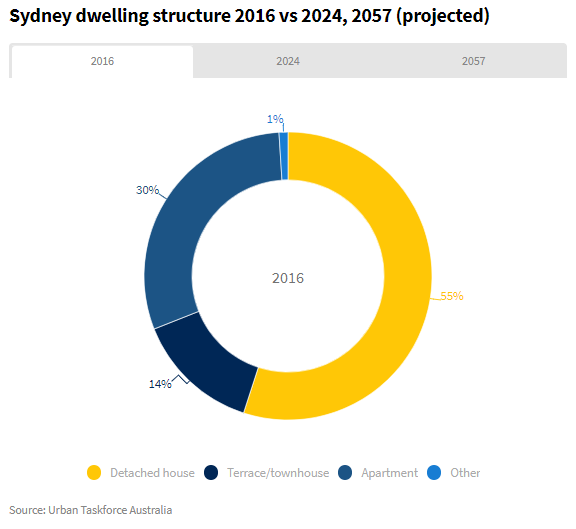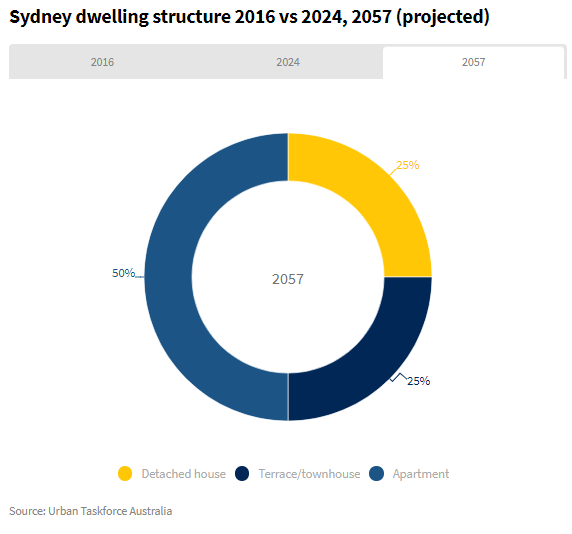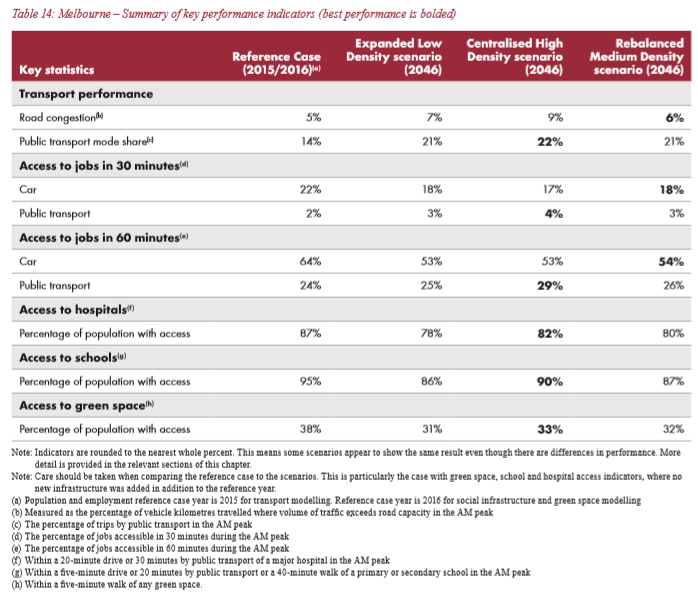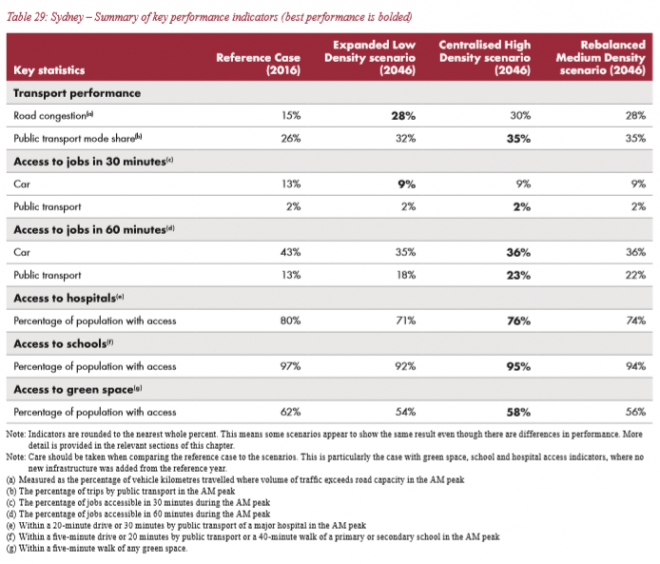For years, ‘Big Australia’ booster, the Grattan Institute, has called for Australia’s supposedly underutilised middle-ring suburbs to be bulldozed for apartments and townhouses in order to house the many millions of extra migrants projected to inundate our cities over coming decades.
This transformation into a dense urban form is to be most stark in Sydney, where the Urban Taskforce projects that only one quarter of dwellings will be detached houses in 2057, down significantly from 55% currently:


This transformation will obviously also see reduced access to green space, according to Infrastructure Australia’s modelling, as Melbourne’s and Sydney’s populations balloon to a projected 7.3 million and 7.4 million people by 2046 (see last row below):


Another thing conveniently ignored by immigration extremists like the Grattan Institute is that in addition to eroding all markers of liveability (see above), their urban infill utopia will also make our cities hotter, causing increased heat-related deaths. That’s the view of Tony Matthews – a senior lecturer in urban and environmental planning at Griffith University – who last month penned the following:
“Heat stress actually causes more deaths in Australia than all of the other natural disasters combined”…
Middle-ring suburbs were more likely to be the leafy, cool retreats created by postwar architecture and planting…
“The real problem comes when we try and increase densities, which we have done in a suburban context through a quality called urban consolidation,” he said.
“And that has been taken up through most of the capital cities, all of the capital cities, in fact.
“It’s squeezing more floorspace out of less land, so that’s why we’re seeing so many apartments, so many townhouses, we’re also seeing a reduction in block sizes from maybe 700 metres or 650 metres to 400 metres.”
Squeezing more properties onto land means there is less room for parks, trees, or anything other than constructed buildings, he said.
The result is dense, urban fringe suburbs with little greenery and houses with no gardens, parks reduced in size as competition for tenancy grows…
“What I feel we have done with these suburbs is we have locked them into a pattern of heat stress, limited outdoor activity, limited use of the public realm, and all of the problems that come with that because they’re not green enough and in some cases they don’t have the potential to be any greener,” Dr Matthews said.
Today, The Daily Telegraph also reports that “rampant” tree removal in Sydney’s North West is leading to “ecological disaster” and raising temperatures:
Sydney’s northwest is facing an “ecological disaster” as a chainsaw massacre of thousands of trees in leafy suburbs make way for new developments and send urban heat soaring.
Preliminary works on major developments in Macquarie Park and Epping are cutting down hundreds of trees as a war of words breaks out over who is to blame for the “environmental atrocity” turning suburbs into concrete jungles…
New data shows big developers and mum-and-dad investors are peppering Ryde and Parramatta councils with development applications to remove trees…
Cr Wilson said…. “when you are putting more people into a limited area, the environment is going to suffer”…
State Labor candidate for Epping Alan Mascarenhas said… “Overdevelopment heats up our suburbs, trees cool them down. “I don’t want Epping going the way of the Parramatta CBD where developers have run riot and the place is basically a tinderbox in summer.”
The Grattan Institute’s infill utopia of jamming millions more people into the existing urban footprint will necessarily chew-up green space as backyards, trees and open space are removed to make way for additional dwellings. And this will necessarily exacerbate the ‘heat island’ effect afflicting our cities, in turn raising energy use (think air conditioners).
Clearly, maintaining green infrastructure in our major cities is not consistent with the projected explosion of their populations via mass immigration, along with planning rules that force increased population density.

